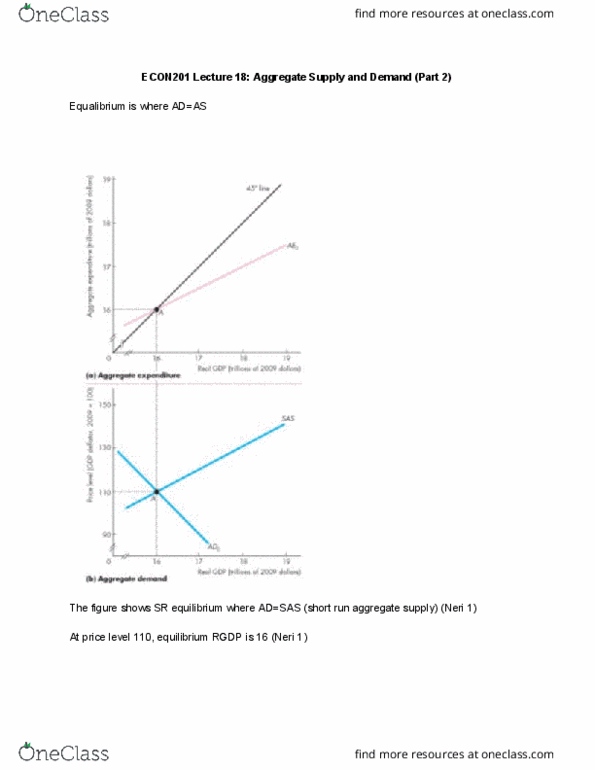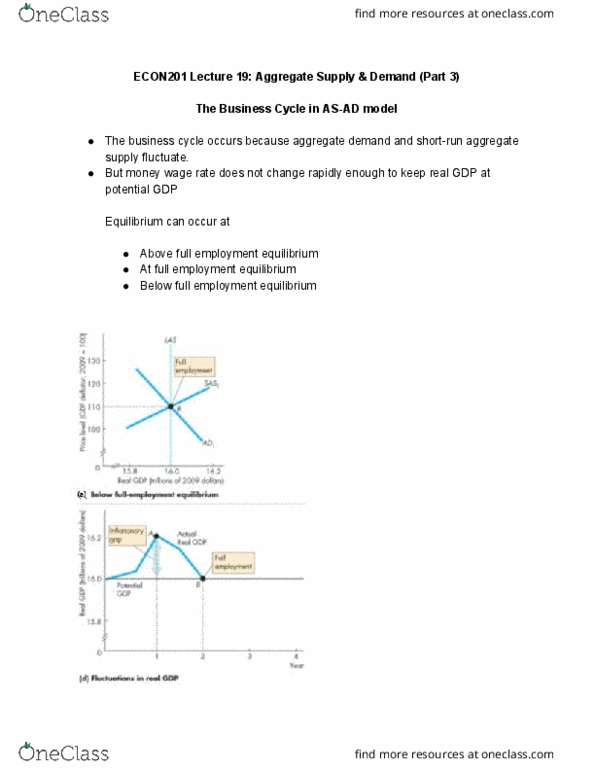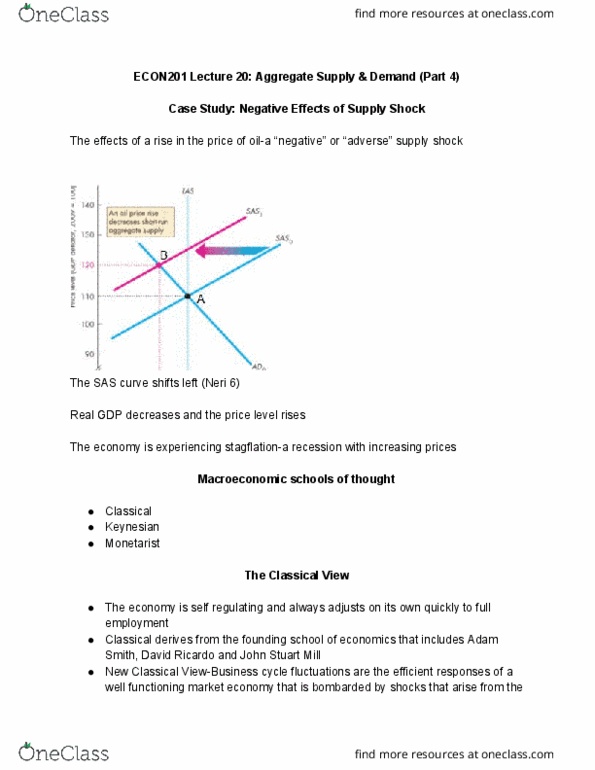In the Keynesian model
aggregate demand determines real GDP per year.
the short-run aggregate supply curve determines real GDP.
unemployment cannot persist for long periods of time.
the aggregate demand curve determines the price level.
A terrible winter storm causes enormous problems in the
northeastern
part of the United States. This would cause
the short-run aggregate supply curve to shift to the left, but would have no effect on the long-run aggregate supply curve.
both the short-run and the long-run aggregate supply curves to shift to the left, but the long-run aggregate supply curve would shift more than the short-run curve.
the short-run aggregate supply curve to shift to the left, and the long-run aggregate supply curve would shift to the right.
both the short-run and the long-run aggregate supply curves to shift to the right in equal amounts.
Equilibrium real GDP rises after the dollar strengthened. From this we can conclude that
the increase in aggregate demand was greater than the decrease in aggregate supply.
the decrease in aggregate demand was more than the increase in aggregate supply.
the decrease in aggregate demand was less than the increase in aggregate supply.
the increase in aggregate demand was less than the decrease in aggregate supply.
Saving is
the difference between real GDP and disposable income while savings is the difference between disposable income and consumption spending.
the amount one does not consume in a given period of time while savings is the accumulation of past periods of saving.
the difference between disposable income and spending on goods and serviceswhile savings is the difference between real GDP and disposable income.
the accumulation of past periods of savings while savings is the amount of disposable income that is not consumed in a given period of time.
A permanent reduction in investment spending leads to
a proportional decrease in real GDP.
a more than proportional decrease in real GDP.
a more than proportional increase in real GDP.
a less than proportional decrease in real GDP.
An increase in net exports leads to an increase in real GDP. Further,
consumption spending increases while investment spending decreases.
consumption spending increases but saving does not change.
consumption spending and saving increase.
government spending decreases to offset the increase in net exports.
An increase in aggregate spending that is caused by a factor other than the price level will lead to the
aggregate demand curve shifting to the right.
aggregate supply curve shifting to the right.
aggregate supply curve shifting to the left.
aggregate demand curve shifting to the left.
The marginal propensity to consume is 0.9. The multiplier is
0.9.
1.11.
0.1.
10.
When the SRAS curve slopes upward, the actual affect of an increase in real autonomous spending on equilibrium real GDP is smaller than predicted by the multiplier because
real GDP increases.
the price level rises
the price level falls.
real GDP decreases.
Other things equal, the lower the total real value of final goods and services demanded in the economy the
more the production possibilities cure shifts to the left.
lower the price level.
higher the price level.
lower the level of endowments.
The long-run aggregate supply curve can be thought of as the
level of output for which real GDP equals nominal GDP.
level of output that the nation is currently producing.
level of real GDP associated with a constant price level.
full-employment level of real GDP.




